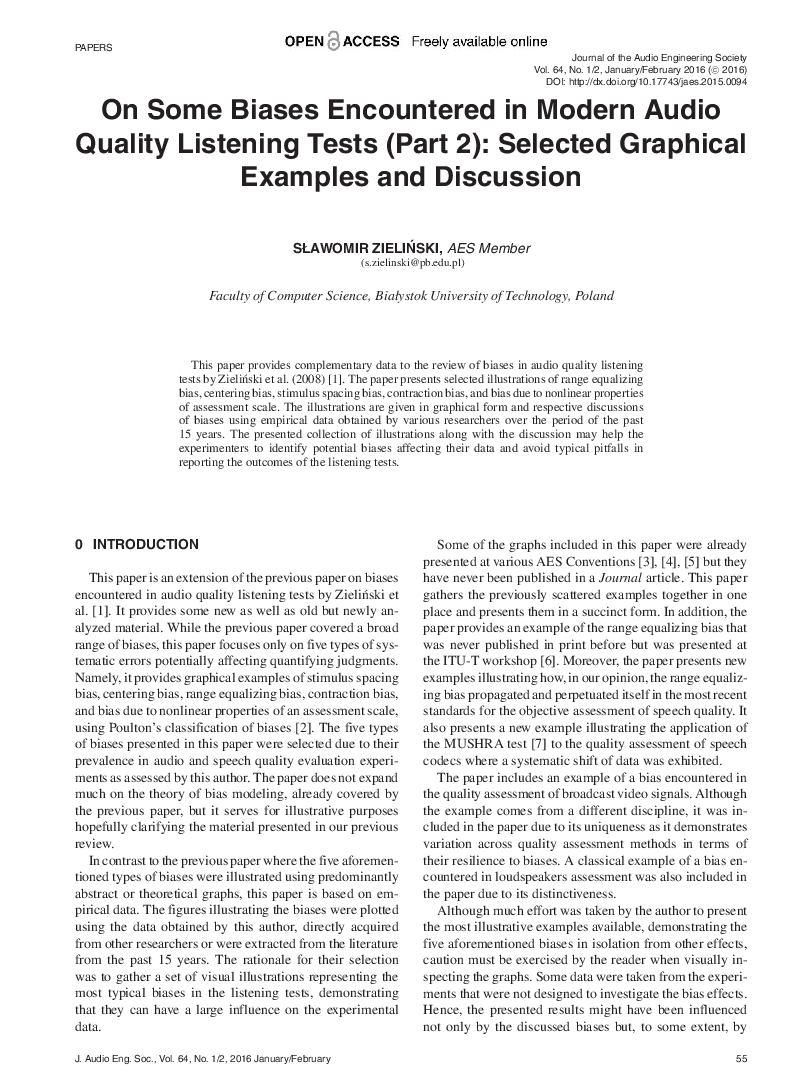Home / Publications / E-library page
You are currently logged in as an
Institutional Subscriber.
If you would like to logout,
please click on the button below.
Home / Publications / E-library page
Only AES members and Institutional Journal Subscribers can download
Measuring audio quality is particularly difficult because the measurement methodology itself strongly biases the results. While a previous paper by the same author covered a broad range of biases, this report focuses only on five types of systemic error potentially affecting quantifying judgments: range equalization bias, stimulus spacing bias, contradiction bias, and biases due to nonlinear properties of the assessment scale. These biases are prevalent in audio and speech quality evaluations. Empirical data obtained by various researchers over the past fifteen years was used to illustrate biases in a graphical representation. The results conclusively show that assessment methods are inherently relative. These results also raise important questions about the utility of verbal descriptors. Researchers should avoid conclusions about quality by associating numerical scores with verbal descriptors at fixed positions along the scale.
Author (s): Zielinski, Slawomir
Affiliation:
Faculty of Computer Science, Bialystok University of Technology, Poland
(See document for exact affiliation information.)
Publication Date:
2016-01-06
Import into BibTeX
Permalink: https://aes2.org/publications/elibrary-page/?id=18105
(460KB)
Click to purchase paper as a non-member or login as an AES member. If your company or school subscribes to the E-Library then switch to the institutional version. If you are not an AES member Join the AES. If you need to check your member status, login to the Member Portal.

Zielinski, Slawomir; 2016; On Some Biases Encountered in Modern Audio Quality Listening Tests (Part 2): Selected Graphical Examples and Discussion [PDF]; Faculty of Computer Science, Bialystok University of Technology, Poland; Paper ; Available from: https://aes2.org/publications/elibrary-page/?id=18105
Zielinski, Slawomir; On Some Biases Encountered in Modern Audio Quality Listening Tests (Part 2): Selected Graphical Examples and Discussion [PDF]; Faculty of Computer Science, Bialystok University of Technology, Poland; Paper ; 2016 Available: https://aes2.org/publications/elibrary-page/?id=18105
@article{zielinski2016on,
author={zielinski slawomir},
journal={journal of the audio engineering society},
title={on some biases encountered in modern audio quality listening tests (part 2): selected graphical examples and discussion},
year={2016},
volume={64},
issue={1/2},
pages={55-74},
month={january},}